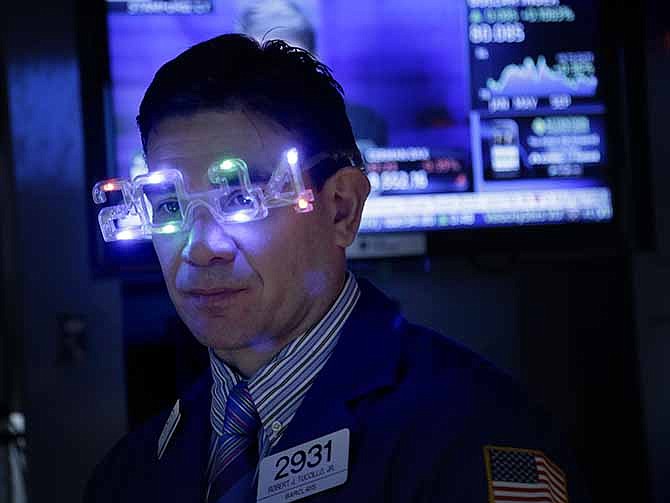NEW YORK (AP) - The stock market's sluggish start in 2014 may not be what investors expected after last year's strong finish.
As of Wednesday, the fifth trading day of the year, the Standard & Poor's 500 index was down 0.6 percent for 2014, after falling four of the five days. A year ago, the index had climbed 2.2 percent, getting a boost after lawmakers passed a bill to avoid government spending cuts and tax increases. Stocks also got a lift after the government reported that hiring held up.
The index built on that strong start and climbed almost 30 percent for the year. But after ending 2013 at a record high, it has stumbled.
Stocks that ended last year poorly are leading the decline so far. Telecoms, consumer staples and utilities all lagged the overall market in the last month of 2013.
While these stocks pay big dividends, their growth prospects are limited and investors are ditching them in favor of stocks that will should benefit as the economy improves.
"I don't think we should be too concerned," about the early slump, says David Kelly, chief global strategist at JPMorgan funds. "There's a certain amount of rebalancing going on, which is completely appropriate after the big year that we've seen."
Five days may not make a year, but by some measures, the weak start is a bad omen for the market.
The Stock Trader's Almanac says that if the S&P 500 rises during the first five days, the index has an 85 percent chance of ending the year higher, based on 40 years of data.
The last time the index fell over that stretch was in 2008 - when the S&P 500 slipped 5.3 percent - as the stock market reeled in the aftermath of the financial crisis. The index ended the year 38.5 percent lower as the Great Recession took hold.
Others prefer to give the market more time before assessing a trend. As goes January, so goes the year, is the classic Wall Street adage.
By that analysis, the stock market's performance for all of January signals how the stock market will perform for the year. The January barometer has been right for 62 or the last 85 years, or 72.9 percent of the time, according to Howard Silverblatt, a senior index analyst at S&P Dow Jones Indices.
Phone companies have sagged the most in the S&P 500 so far in 2014, dropping 2 percent. Consumer staples, a group that includes grocers, brewers and tobacco stocks, are the second-worst performers, dropping 1.9 percent. These high-dividend paying stocks were in demand when bond yields were low.
Now that 10-year Treasury yields have surged from a 2013 low of 1.63 percent last spring to nearly 3 percent, these high-dividend stocks are less attractive in comparison. An investor looking for steady income will typically favor bonds over stocks because they are less risky.
The only two sectors that have advanced this year are health care stocks, which have risen 1.2 percent, and financial companies, which are up 0.6 percent.
Still, despite the market's slow start, many analysts say it's too early to be down on stocks, particularly since the S&P 500 index jumped 2.1 percent the last two weeks of 2013.
Instead, analysts are focusing on the improving outlook for the economy and company earnings, as well as the future of the Federal Reserve's stimulus program. And those factors, which helped drive last year's rally in stocks, appear to be in place.
"I'd be much more worried if it hadn't rallied in the last couple of weeks in December," said John Manley, chief equity strategist at Wells Fargo Fund Management. "The basic fundamentals are still OK."
Investors will get a key insight into the strength of the economy on Friday, when the government publishes its monthly jobs report for December. Another strong report, confirming that hiring is still picking up, could help stir the stock market from its malaise.
Another catalyst could be fourth-quarter earnings reports, which start Thursday. Analysts predict that S&P 500 companies will report that earnings grew 5.8 percent for the period, according to S&P Capital IQ. That would be the fastest rate of growth since the fourth quarter of 2012.
Before they rush to sell, investors should also know that the Stock Trader's Almanac study of the first five days has a caveat.
In midterm election years - like 2014 - the indicator has a "spotty record," according to the publisher. In fact, it's almost a contrary indicator, with only two of the last nine midterm years following the trend.
That means a poor start could lead to a good year.

